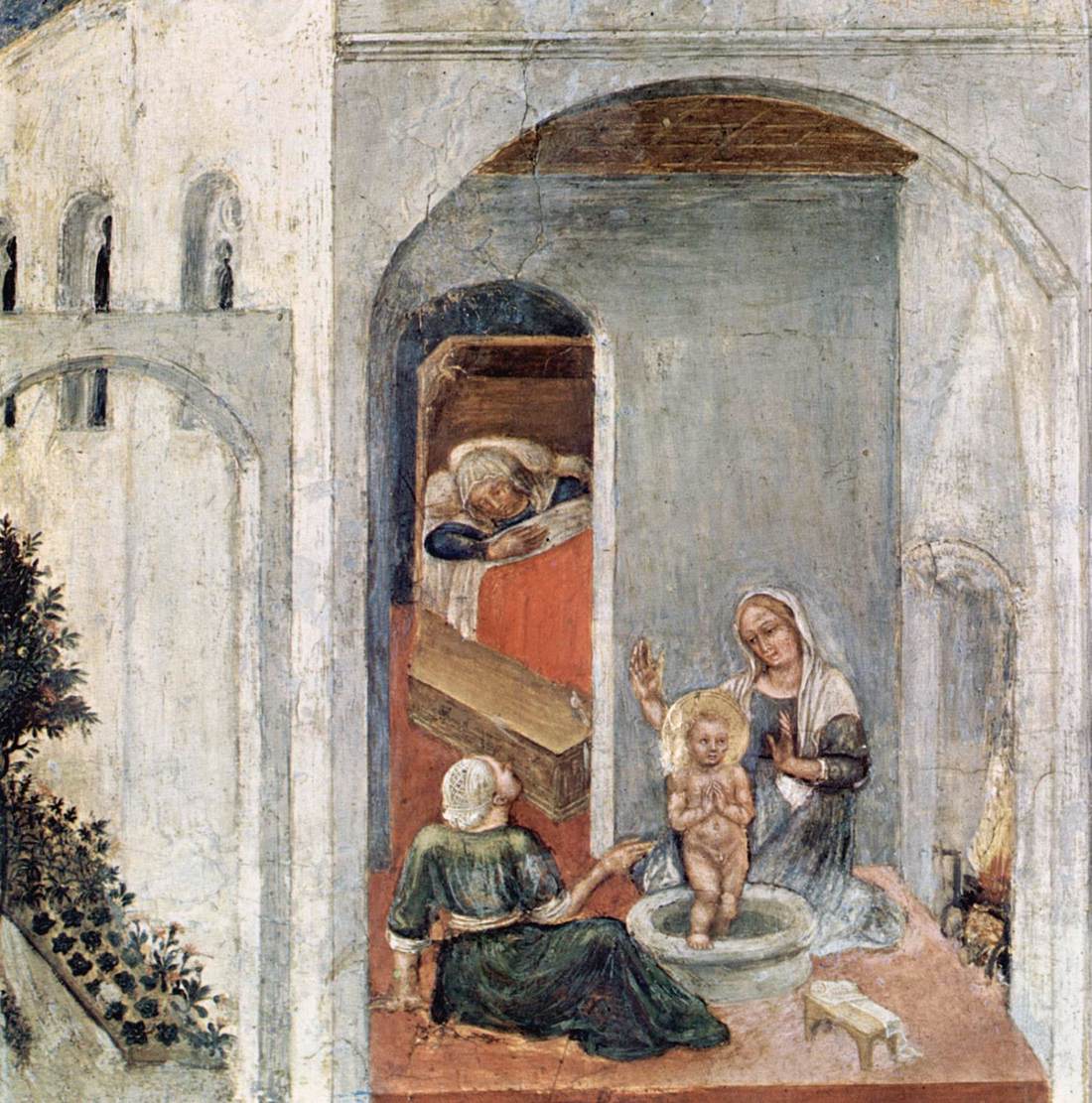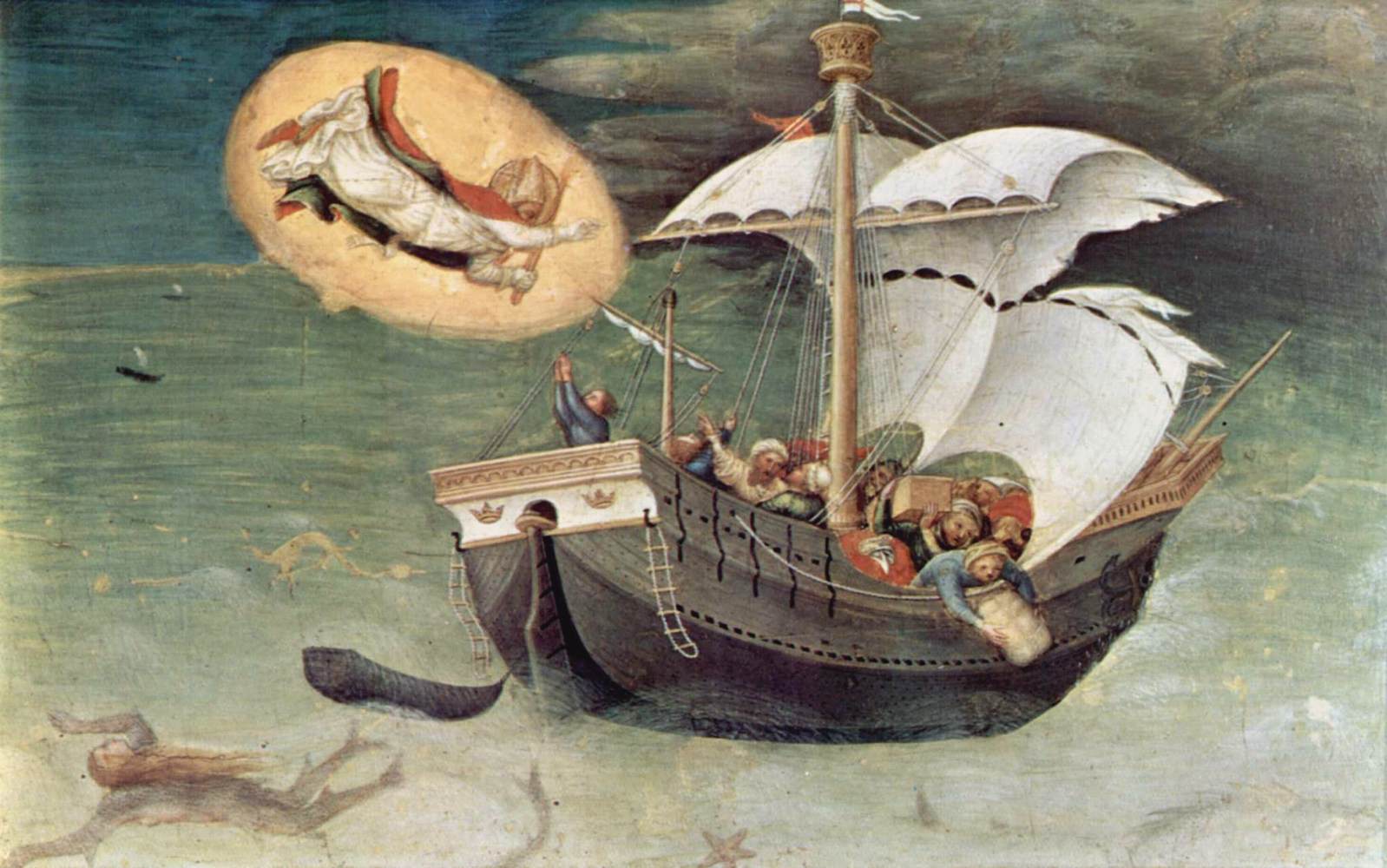Painter Gentile da Fabriano passed away before 14 October 1427, when a document refers to him as dead.
Gentile’s name derives from his hometown of Fabriano, located between Perugia and Ancona in central Italy, where he was born around 1385. The painter probably trained in this city before moving to Venice in 1408. Here he was commissioned extremely important works such as a fresco representing the naval battle between the Serenissima and Frederick Barbarossa for the Sala del Maggior Consiglio in the Doge’s Palace, part of a cycle destroyed as early as 1557. According to Francesco Sansovino’s chronicle of the city (1581), Gentile was paid the exorbitant fee of a ducat per day and dressed lavish open-sleeved robes fit for a nobleman. Another important work from this period is the polyptych known as the Valle Romita altarpiece. Considered Gentile’s first masterpiece, it reveals the influence of Michelino da Besozzo, a Lombard painter and illuminator characterized by a refined, languorous and rhythmically sophisticated style.
Sometimes after May 1431 Gentile was appointed court artist to Pandolfo Malatesta, Lord of Fano, Bergamo, and Brescia and commander of Venetian forces. By January 1414. Gentile had moved to Brescia, where he dedicated five years to the fresco decoration of the court house or Broletto. In September 1419 Gentile left the city to join the Pope in Florence. He rented a house in the city, despite also petitioning for an exception from taxes and debts in Fabriano and expressing the wish to live and die in his hometown.
Around this time, Gentile started painting his first signed work, the altarpiece of the Adoration of the Magi now at the Uffizi. Widely considered the most influential Italian work of his time, the panel was commissioned by the Florentine banker Palla Strozzi for the sacristy of the church of Santa Trinita, used as a private chapel by this successful family. Indebted to Donatello’s innovations in sculpture, the work fuses consistent lighting and precise perspective construction with minute observation and richly-decorated gold leaf surfaces.
By the time this work was completed in May 1423, Gentile was probably the leading painter of Florence: he received a large number of commissions and exerted an even larger influence on his contemporaries. About a century later, Giorgio Vasari described a work of this period — the polyptych completed in May 1425 for the high altar of San Niccoló sopr’Arno — as the artist’s masterpiece.
In the following months, Gentile lived and worked in Siena and Orvieto; in 1427, he moved to Rome to take part in the fresco decoration of San Giovanni in Laterano, although death soon interrupted his work. Completed by Pisanello, the decoration was destroyed in the seventeenth century.
Gentile’s posthumous fame was ensured by the writings of contemporary humanists such as Bartolomeo Facio, who extolled the painter’s virtuosity and his naturalistically descriptive style. In a late sixteenth-century guidebook to the city of Florence, Francesco Bocchi memorably wrote that Gentile’s Adoration‘is held in reverence like a work of antiquity and because it proceeds from the first painter in whom was born the wonderful style which is today in flower’.
Contrary to the interpretation current until the mid-twentieth century, contemporaries saw Gentile as one of the founders of the new Renaissance style, and not just as a consummate master of a courtly Late Gothic manner. In fact, the painter was among the first to introduce innovations such as abandoning abstract backgrounds for real skies, depicting a light source into the picture, and representing cast shadows. Moreover, stylistic analysis suggests that Gentile may be the author of various drawings of Roman sarcophagi preserved in a sketchbook begun in his studio and later completed by Pisanello. These are the earliest known drawings after the antique.
Reference: Hellmut Wohl. “Gentile da Fabriano.” Grove Art Online. Oxford Art Online. Oxford University Press, http://www.oxfordartonline.com/subscriber/article/grove/art/T031359; Getty Museum Website, ‘Gentile da Fabriano,’ http://www.getty.edu/art/collection/artists/665/gentile-da-fabriano-italian-about-1370-1427/.
Polyptych of Valle Romita, c. 1400, Tempera on panel, Pinacoteca di Brera, Milan. Photo: Web Gallery of Art
Detail of the Polyptych of Valle Romita. Photo: Wikimedia Commons.
Adoration of the Magi, 1423, Tempera on wood, 300 x 282 cm, Galleria degli Uffizi, Florence. Photo: Web Gallery of Art
Detail of the Adoration of the Magi. Photo: Web Gallery of Art.
Presentation of Christ in the Temple, originally part of the predella of the Adoration of the Magi, 1423, Tempera on wood, 25 x 62 cm, Musée du Louvre, Paris. Photo: Web Gallery of Art.
Quaratesi Polyptych: Virgin and Child, 1425, Egg tempera on poplar, 140 x 83 cm, National Gallery, London. Photo: Web Gallery of Art.
Quaratesi Polyptych: The Birth of St Nicholas
1425, Tempera on panel, 37 x 37 cm, Pinacoteca, Vatican. Photo: Web Gallery of Art.
Quaratesi Polyptych: Miracle of the Pilgrims at St Nicholas’s Tomb, 1425, Tempera on panel, 36 x 35 cm, National Gallery of Art, Washington. Photo: Web Gallery of Art.
Quaratesi Polyptych: St Nicholas Saves a Storm-tossed Ship, 1425, Tempera on panel, 37 x 37 cm, Pinacoteca, Vatican. Photo: Web Gallery of Art.








